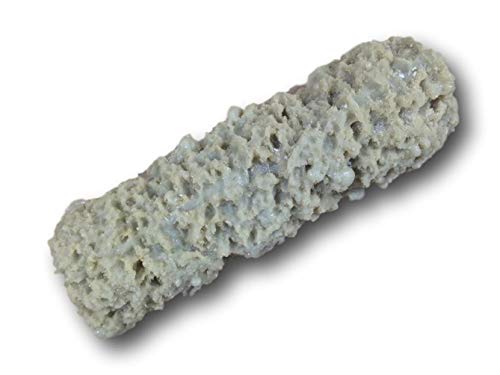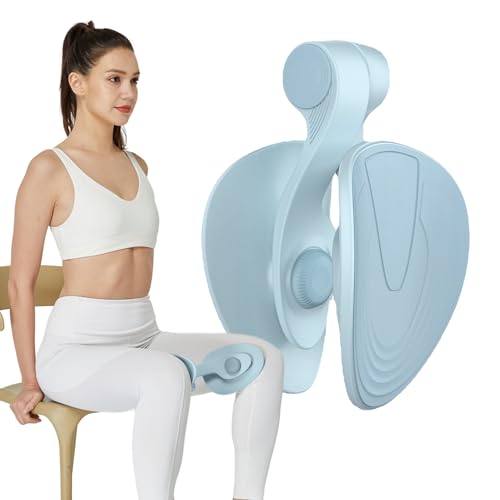You are using an out of date browser. It may not display this or other websites correctly.
You should upgrade or use an alternative browser.
You should upgrade or use an alternative browser.
Pulmonary Problems May Be Late Complication of Lap Band
- Thread starter annie0039
- Start date

Help Support Bariatric & Weight Loss Surgery Forum:
ProteinSnob
Well-Known Member
Can't see this one and it looks really interesting
December 22, 2011 — Physicians caring for patients with laparascopic adjustable gastric bands (lap bands) should remain alert for late complications, according to a report published online December 22 in the Lancet.
"Given the increasing frequency of people undergoing interventional procedures to aid weight loss, recognition of the short-term and long-term complications is paramount," the authors warn.
Adam Czapran, MBChB, from the Department of Respiratory Medicine and the Coronary Care Unit at Russells Hall Hospital in Dudley, West Midlands, United Kingdom, and colleagues describe the case of a 49-year-old woman who presented in May 2010 with a 4-month history of night sweats and a persistent productive cough. Her body mass index (BMI) at the time of presentation was 32.6 kg/m 2, which was down from 45.4 kg/m 2 after undergoing lap band surgery in September 2008.
Despite a history of asthma, the patient had not responded to treatment for asthma exacerbations. Blood tests revealed evidence of inflammation (C-reactive protein 81 mg/L; erythrocyte sedimentation rate 96 mm/hour), and chest X-rays (CXR) showed left upper zone cavitation. Tuberculosis (TB) was suspected, given the night sweats and the CXR appearance. Referral to the TB clinic led to a thoracic computerized tomography (CT) scan, which confirmed a 3.2 × 2.8 cm apical lung lesion with irregular cavitation and showed esophageal dilatation. Tests for tuberculosis (including bronchoscopy and bronchioalveolar lavage) and autoimmune disease were persistently negative, and treatment with metronidazole and doxycycline for 6 weeks provided only modest and temporary relief.
"At this point, the diagnosis of recurrent aspiration and cavitation secondary to a severe restriction from her gastric banding was suspected," the authors write. Her clinical and radiographic symptoms resolved when the gastric band was emptied, confirming the diagnosis. At her last follow-up examination in May 2011, her gastric band had been refilled, her BMI was 34.8 kg/m 2, and she had experienced no recurrence of the aspiration.
Lap bands are associated with a high rate of late complications, the authors explain. Pouch expansion, band slippage, and erosion are most common, but in rare patients, aspiration pneumonia may develop "secondary to severe restriction and oesophageal dilatation or reflux." The symptoms may resemble asthma, and chest radiography or thoracic CT scan is recommended for patients with lap bands who present with respiratory symptoms. Emptying the band promptly relieves the obstruction.
The authors have disclosed no relevant financial relationships.
Lancet. Published online December 22, 2011. Extract
"Given the increasing frequency of people undergoing interventional procedures to aid weight loss, recognition of the short-term and long-term complications is paramount," the authors warn.
Adam Czapran, MBChB, from the Department of Respiratory Medicine and the Coronary Care Unit at Russells Hall Hospital in Dudley, West Midlands, United Kingdom, and colleagues describe the case of a 49-year-old woman who presented in May 2010 with a 4-month history of night sweats and a persistent productive cough. Her body mass index (BMI) at the time of presentation was 32.6 kg/m 2, which was down from 45.4 kg/m 2 after undergoing lap band surgery in September 2008.
Despite a history of asthma, the patient had not responded to treatment for asthma exacerbations. Blood tests revealed evidence of inflammation (C-reactive protein 81 mg/L; erythrocyte sedimentation rate 96 mm/hour), and chest X-rays (CXR) showed left upper zone cavitation. Tuberculosis (TB) was suspected, given the night sweats and the CXR appearance. Referral to the TB clinic led to a thoracic computerized tomography (CT) scan, which confirmed a 3.2 × 2.8 cm apical lung lesion with irregular cavitation and showed esophageal dilatation. Tests for tuberculosis (including bronchoscopy and bronchioalveolar lavage) and autoimmune disease were persistently negative, and treatment with metronidazole and doxycycline for 6 weeks provided only modest and temporary relief.
"At this point, the diagnosis of recurrent aspiration and cavitation secondary to a severe restriction from her gastric banding was suspected," the authors write. Her clinical and radiographic symptoms resolved when the gastric band was emptied, confirming the diagnosis. At her last follow-up examination in May 2011, her gastric band had been refilled, her BMI was 34.8 kg/m 2, and she had experienced no recurrence of the aspiration.
Lap bands are associated with a high rate of late complications, the authors explain. Pouch expansion, band slippage, and erosion are most common, but in rare patients, aspiration pneumonia may develop "secondary to severe restriction and oesophageal dilatation or reflux." The symptoms may resemble asthma, and chest radiography or thoracic CT scan is recommended for patients with lap bands who present with respiratory symptoms. Emptying the band promptly relieves the obstruction.
The authors have disclosed no relevant financial relationships.
Lancet. Published online December 22, 2011. Extract
ProteinSnob
Well-Known Member
Hey- thanks!
Spiky Bugger
Well-Known Member
- Joined
- Jan 5, 2014
- Messages
- 6,311
...symptoms resolved when her gastric band was emptied, confirming the diagnosis. At her last follow-up examination in May 2011, her gastric band had been refilled, her BMI was 34.8 kg/m 2, and she had experienced no recurrence of the aspiration.
And the REASON they refilled it was because they expected to get DIFFERENT results when she was again subjected to that POS?
I mean...really?

$44.75 ($1.23 / Ounce)
$54.75 ($1.50 / Ounce)
LIVING HEALTHY NUTRITION BariSuccess Vanilla Whey Isolate Protein Powder - 30g Protein, 30 Servings/Container - Free of Fat, Sugar, Gluten, Soy & Lactose - Low Carb Bariatric Meal Replacement Protein
My Bariatric Kitchen

$41.00
Walttools Tru Tex CORAL Texture Roller Sleeve for Concrete Flatwork and Vertical Concrete - Quick, Easy, Realistic Patterns, User-Friendly (Coral Stone)
Decorative Concrete Supply Source

$10.00 ($10.00 / Count)
First Days Maternity - Maxi Peri Bottle for Maximum Postpartum Soothing! Large 650ml Capacity Allows for an Effective Soothe. Pink Colour
First Days Maternity

$9.49
$15.99
Fresh Start Bariatric Cookbook: Healthy Recipes to Enjoy Favorite Foods After Weight-Loss Surgery
Amazon.com

$19.87 ($0.17 / Count)
$29.97 ($0.25 / Count)
PAWFECTCHEW Pawfect Mobility - Glucosamine Treats for Dogs - Hip & Joint Health Supplement Chews w/Omega-3, Chondroitin, MSM - Made in USA - Joint Pain Relief - Hip & Joint Care - 120ct
PawfectSupplies

$18.70 ($1.65 / Ounce)
$19.99 ($1.76 / Ounce)
Quest Nutrition Mini Cookies & Cream Protein Bars, 8g Protein, 1g Sugar, 2g Net Carbs, Gluten Free, 14 Count
Amazon.com

$8.99
$15.99
The Gastric Sleeve Bariatric Cookbook: Easy Meal Plans and Recipes to Eat Well & Keep the Weight Off
Amazon.com

$10.17
$18.99
The Complete Bariatric Cookbook and Meal Plan: Recipes and Guidance for Life Before and After Surgery
Amazon.com

$16.99 ($0.39 / Ounce)
BariWise Protein Soup Mix, Chicken Noodle, 15g Protein, Low Carb (7ct).
DIET DIRECT

$11.36
$14.95
Gastric Bypass Diet: Step By Step Guide to Gastric Bypass Surgery (Bariatric Cookbook)
Amazon.com

$9.29
$14.95
Gastric Bypass Recipes: 80+ Simple Recipes for the First Stage After Gastric Bypass Surgery (Bariatric Cookbook)
Amazon.com
Munchkin
Full of Fairy Dust
I can't believe they refilled it! I would want that thing gone!
Elizabeth N.
Herder of cats
Ooooo, I'd love to see the references on this article. Since the author asserts a high rate of late complications, I bet there are studies in there to back it up....
Similar threads
- Replies
- 11
- Views
- 1K
- Replies
- 5
- Views
- 1K
- Replies
- 11
- Views
- 1K































